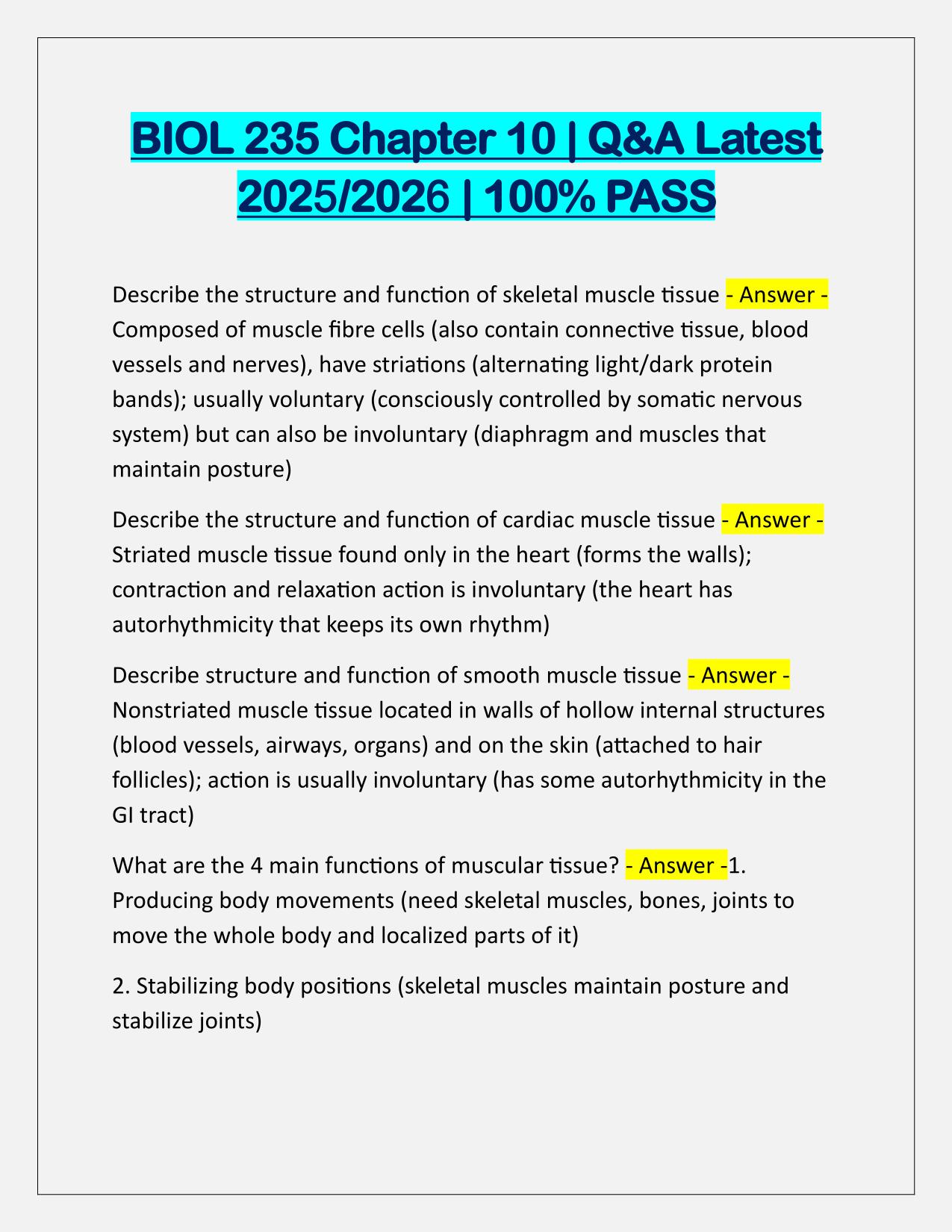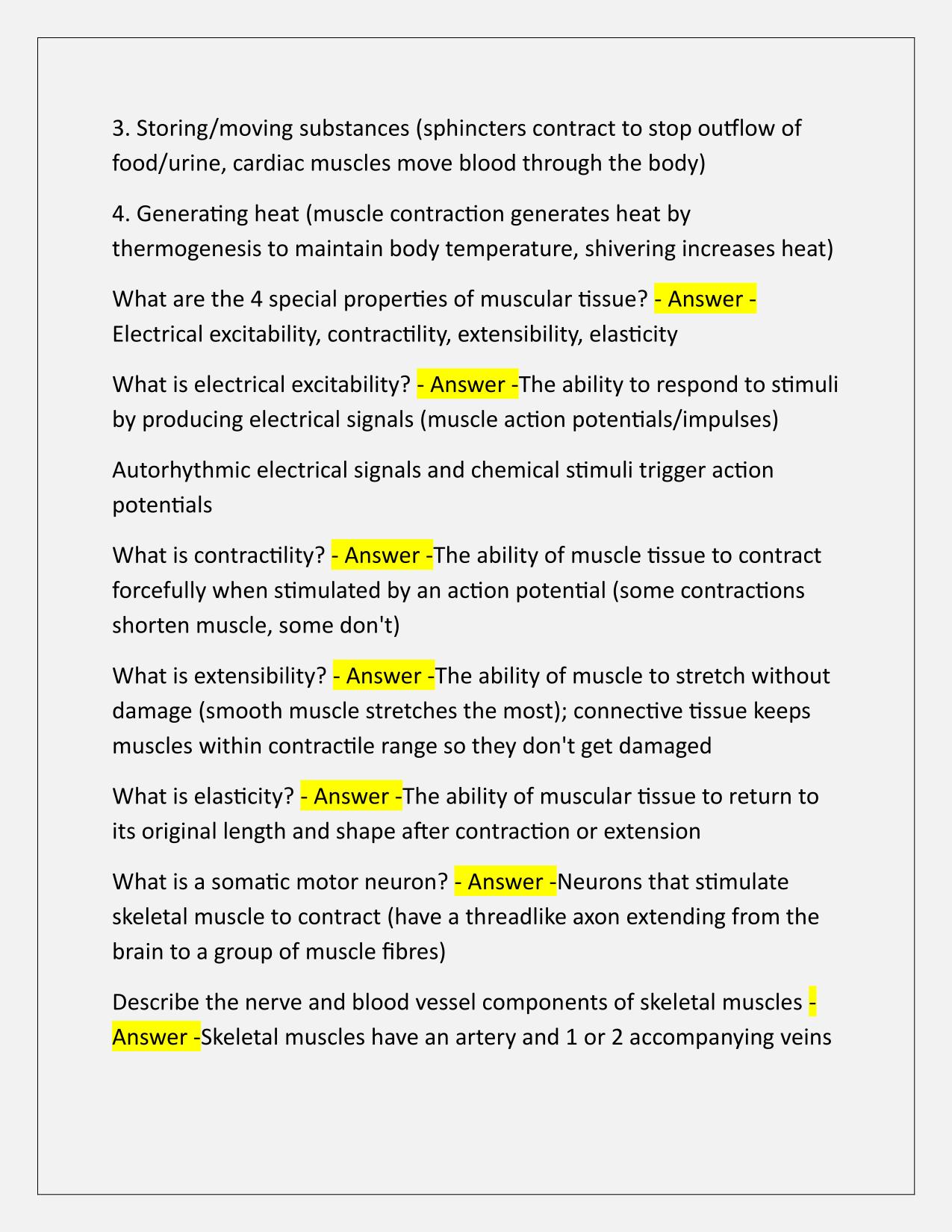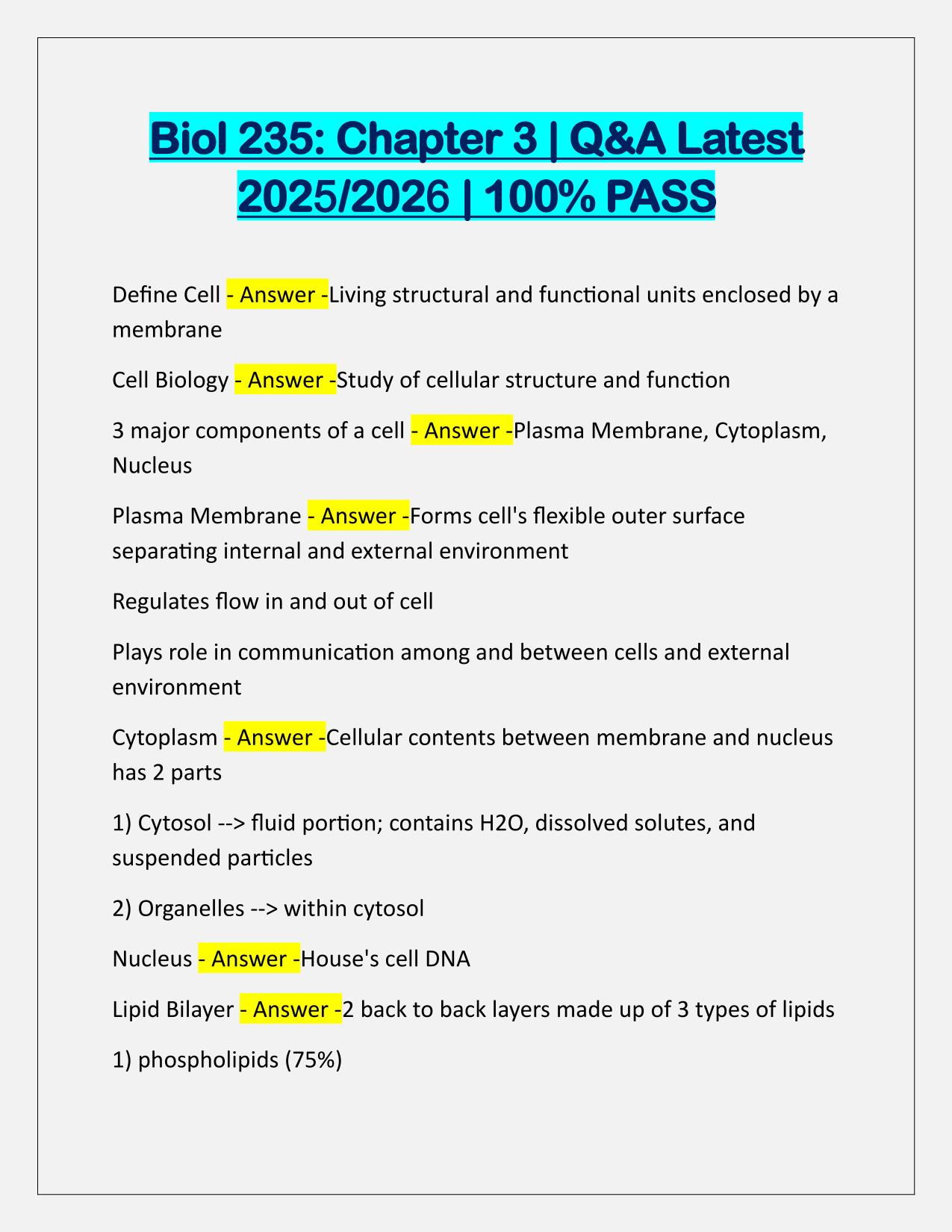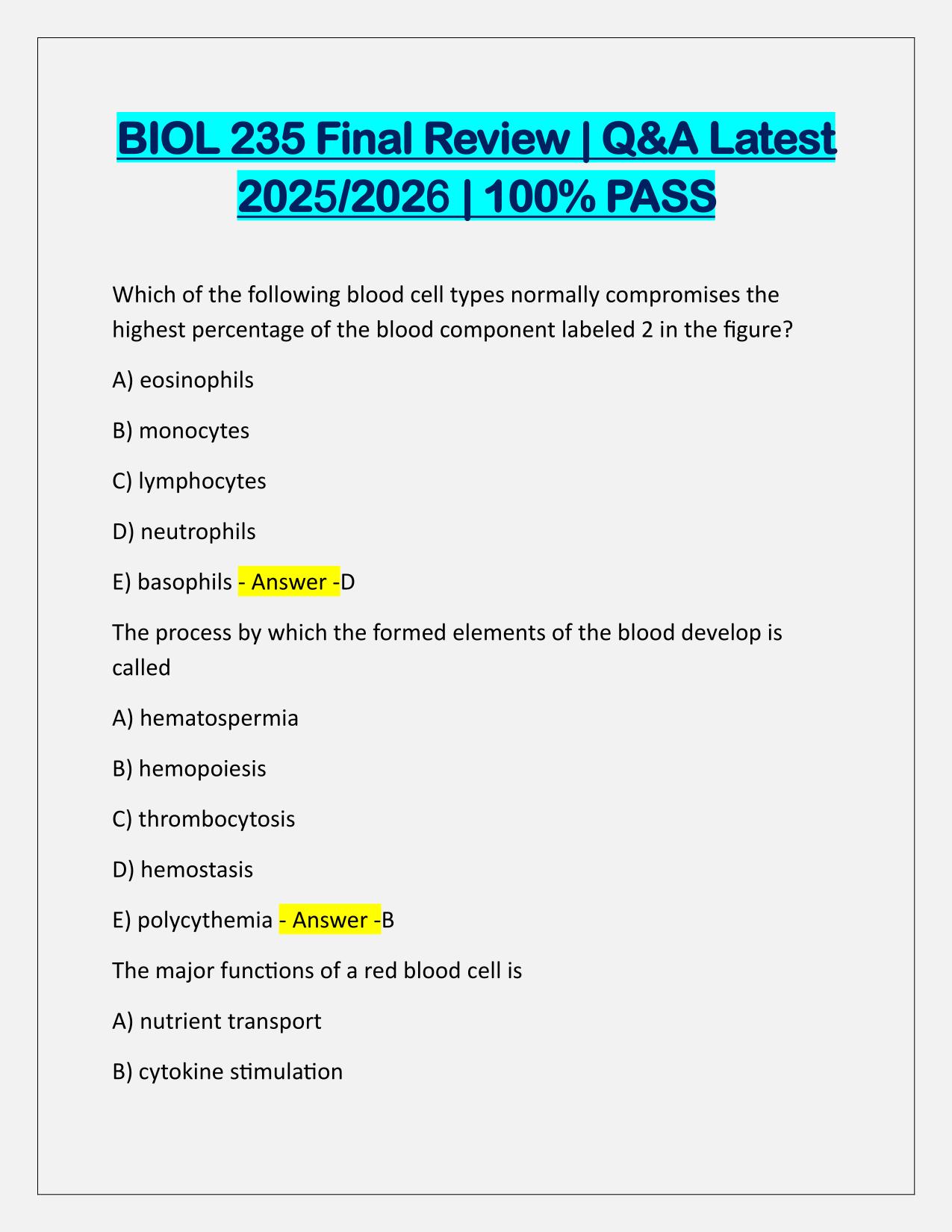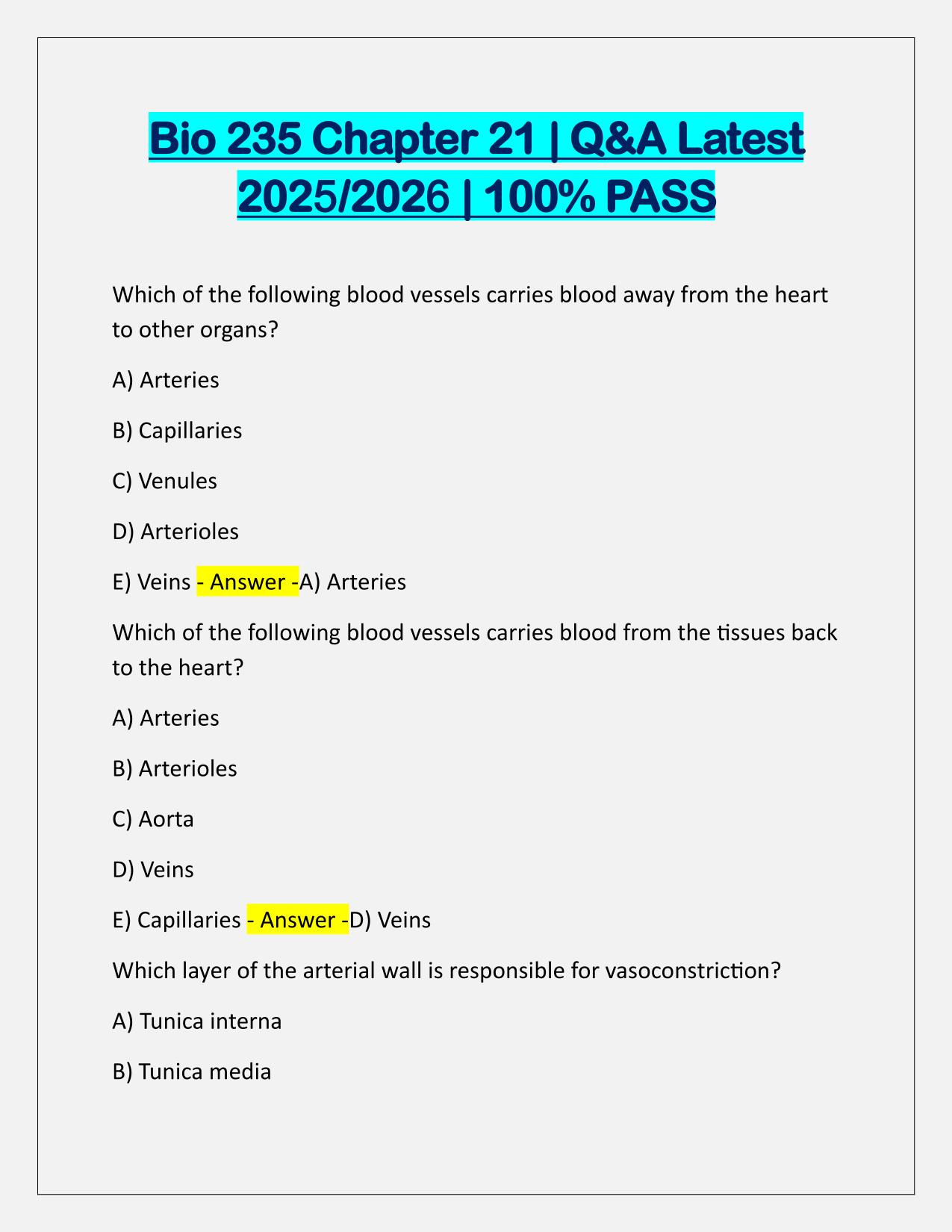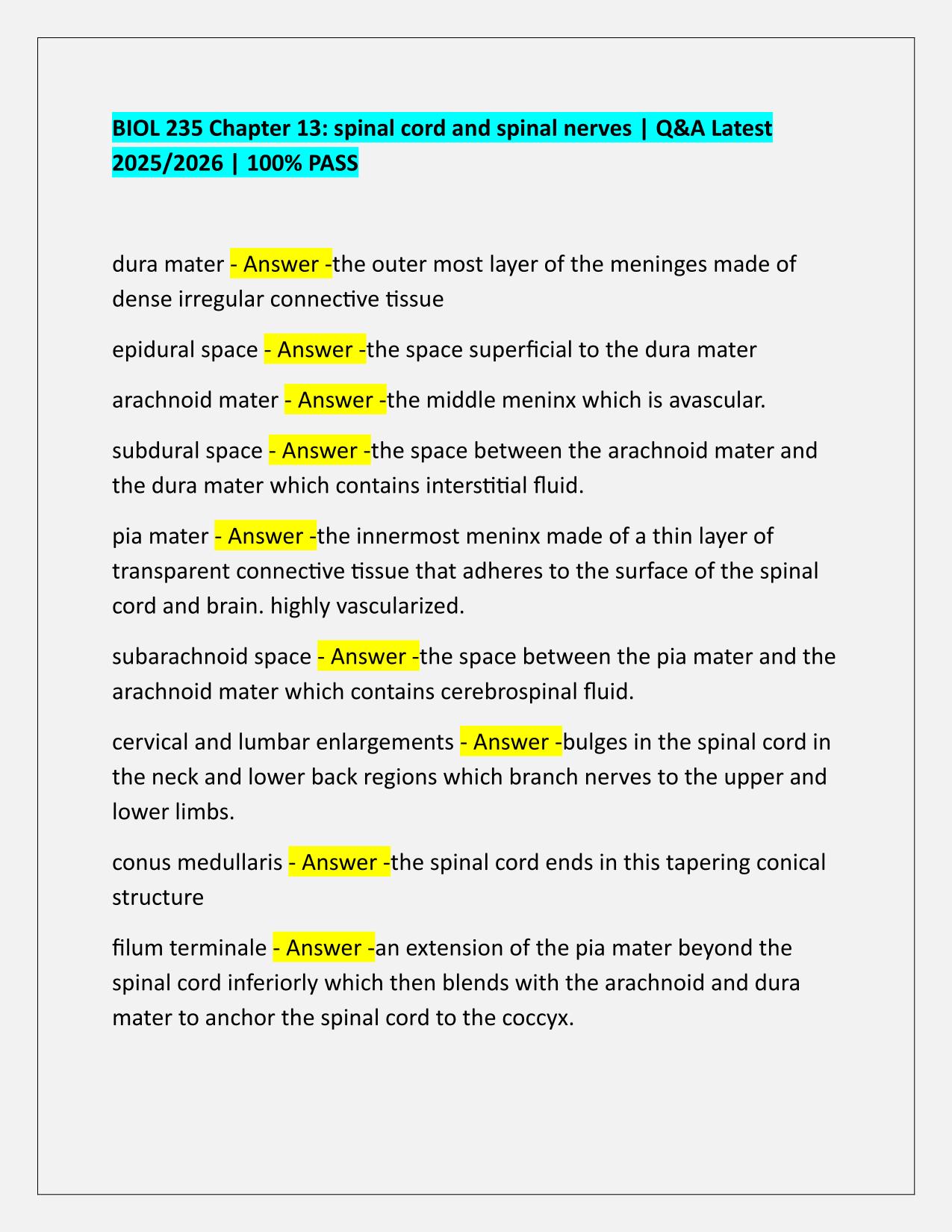BIOL 235 Chapter 10 Q&A Latest Update
Course:
BIOL 235
Institution:
BIOL 235
BIOL 235 Chapter 10 Q&A Latest Update
After purchase, you get:
✅ Instant PDF Download
✅ Verified answer explanations
✅ Refund if not Satisfied
✅ Prepared for 2025/2026 test cycle
Document Information
| Uploaded on: | May 8, 2025 |
| Last updated: | May 8, 2025 |
| Number of pages: | 20 |
| Written in: | 2025/2026 |
| Type: | Exam (elaborations) |
| Contains: | Questions & Answers |
| Tags: | BIOL 235 Chapter 10 Q&A Latest Update |
Seller Information

AdelineJean
User Reviews (0)
Exam (Elaborations)
$9.00
Bundle Deal! Get all 17 docs for just $25.00
Add to Cart
100% satisfaction guarantee
Refund Upon dissatisfaction
Immediately available after purchase
Available in Both online and PDF
$9.00
| 0 sold
Related Documents
Available in a Bundle
Content Preview
BIOL 235 Chapter 10 | Q&A Latest 2025/2026 | 100% PASS Describe the structure and function of skeletal muscle tissue - Answer Composed of muscle fibre cells (also contain connective tissue, blood vessels and nerves), have striations (alternating light/dark protein bands); usually voluntary (consciously controlled by somatic nervous system) but can also be involuntary (diaphragm and muscles that maintain posture) Describe the structure and function of cardiac muscle tissue - Answer Striated muscle tissue found only in the heart (forms the walls); contraction and relaxation action is involuntary (the heart has autorhythmicity that keeps its own rhythm) Describe structure and function of smooth muscle tissue - Answer Nonstriated muscle tissue located in walls of hollow internal structures (blood vessels, airways, organs) and on the skin (attached to hair follicles); action is usually involuntary (has some autorhythmicity in the GI tract) What are the 4 main functions of muscular tissue? - Answer -1. Producing body movements (need skeletal muscles, bones, joints to move the whole body and localized parts of it) 2. Stabilizing body positions (skeletal muscles maintain posture and stabilize joints)
